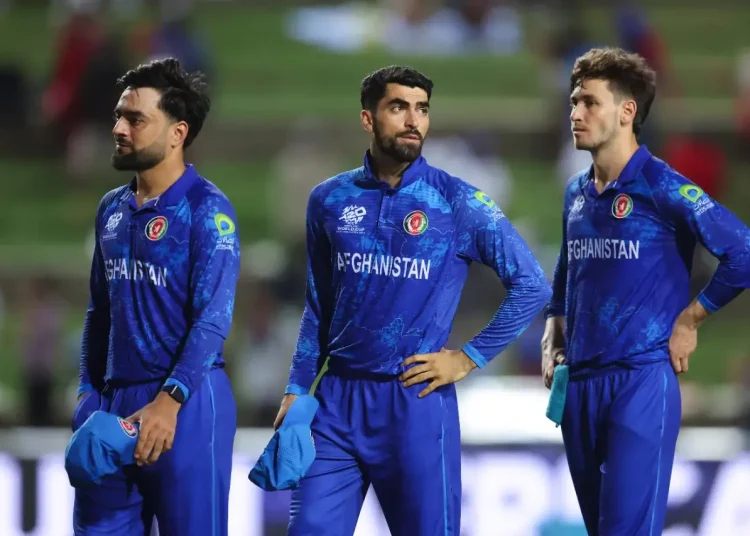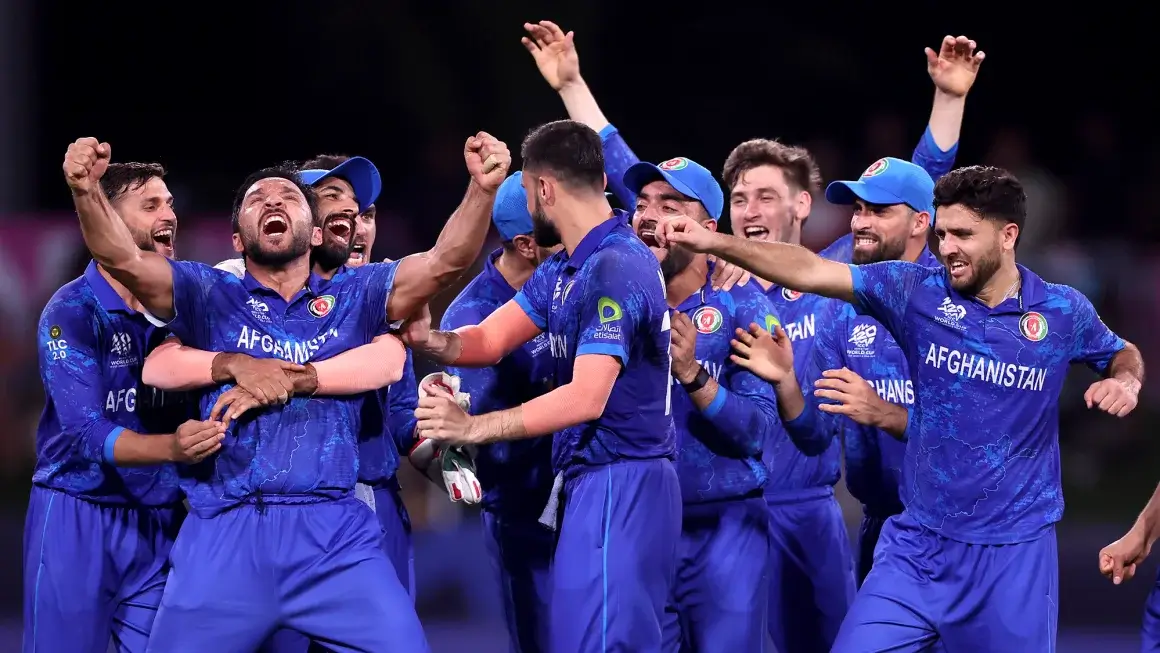The Asia Cup 2025 begins in the UAE on September 9. Afghanistan enters with hope, history, and a growing reputation. They have never made the final before, but recent performances show this team cannot be underestimated.
The tournament format is simple: top two teams from each group qualify for the Super Four, and the best two from there meet in the final. India, Pakistan, Sri Lanka, Bangladesh, and Afghanistan qualify directly, while UAE, Oman, and Hong Kong fight for entry.
A recent ESPN discussion raised a vital question: “Can Afghanistan make the final, or will it be another India vs Pakistan clash?” The answer depends on their spinners, batting stability, and ability to handle pressure in crunch moments. Let’s break down Afghanistan’s chances, their key strengths, and the challenges ahead in UAE conditions.
Why Afghanistan Could Shock the Asia Cup 2025?
Afghanistan has developed into one of the most dangerous sides in T20 cricket. Their biggest asset is their spin attack, led by Rashid Khan, Mujeeb Ur Rahman, and Noor Ahmad. These bowlers thrive on the UAE’s dry pitches, where the ball grips and slows down.
Their global record is improving too. Afghanistan reached the T20 World Cup semi-final and picked up headline wins in the ODI World Cup, including upsets over stronger nations. These results show they can handle pressure against elite teams.
Leadership under coach Jonathan Trott has added structure. Bowlers have defined roles, and batters are encouraged to play with responsibility rather than recklessness. The balance of freedom and discipline is now visible in their game.
Many analysts see Afghanistan as one of the five title contenders in this Asia Cup. India remains the tournament favorite, but experts argue that Afghanistan is a genuine threat to Pakistan’s hopes of reaching the final. Their mix of fearless cricket and tactical awareness makes them dangerous in crunch matches.
Tactical Edge: Spinners and Experience
Afghanistan’s spin department is world-class. Rashid, Mujeeb, and Noor are not just economical but also consistent wicket-takers. UAE pitches favor their style, and opposing batters often fail to take risks against them.
The team’s experience in global tournaments gives them confidence. Wins against sides like England and Pakistan in ICC events have proven they can perform on the big stage. With Trott’s calm approach, Afghanistan is no longer just about raw talent—it’s about execution and strategy.
Openers like Rahmanullah Gurbaz and Ibrahim Zadran bring stability at the top. When they give a solid start, the middle order can capitalize without panic. If their batting clicks alongside the spinners’ control, Afghanistan can outplay teams like Sri Lanka or Bangladesh in the group stage.
The Road to the Final: Groups and Super Four
Afghanistan is placed in Group B with Sri Lanka, Bangladesh, and Hong Kong. To progress, they must secure at least two wins in this phase. Victories against Hong Kong and one of Sri Lanka or Bangladesh will likely be enough to qualify for the Super Four.
In the Super Four, Afghanistan will face giants from Group A—most likely India, Pakistan, and possibly the UAE. Here, the competition intensifies, but Afghanistan has already shown in past tournaments that they can trouble Pakistan and push India close.
The final is scheduled for September 28 in Dubai. To get there, Afghanistan needs to manage resources wisely, rely on its spin attack, and ensure its batting avoids collapses. If they stay consistent, they could surprise the cricketing world by reaching their first Asia Cup final.
Risks and Challenge Areas for Afghanistan
Despite their strengths, Afghanistan carries weaknesses that could block its path. The batting lineup remains fragile when the top order fails. Too often, collapses have undone the work of their bowlers in big matches.
Oppositions like India and Pakistan have powerful batting units capable of negating spin with aggressive stroke play. If Afghanistan’s bowlers fail to get early wickets, they may struggle to contain runs.
Another challenge is handling pressure in tight games. Bangladesh, often underestimated, has a history of producing Asia Cup upsets. A single slip in the group stage could end Afghanistan’s campaign early.
Tight scheduling and short recovery times will also test their physical and mental endurance. Depth in batting and composure in crunch chases remain their biggest hurdles.
Key Players Who Can Shape Afghanistan’s Journey
Rashid Khan is Afghanistan’s biggest weapon. His ability to deliver economical overs and pick wickets in the middle is unmatched. In the UAE, he has the experience of IPL and PSL behind him.
Mujeeb Ur Rahman brings variety with the new ball. His ability to bowl in the power play sets the tone early. Noor Ahmad adds youthful energy and wrist-spin control, giving Afghanistan three world-class options.
In batting, Rahmanullah Gurbaz is the explosive opener who can swing matches in the first six overs. Ibrahim Zadran is more composed and ensures stability. Najibullah Zadran and Mohammad Nabi provide finishing power in the middle and lower order.
Together, these players form the backbone of Afghanistan’s campaign. If they deliver consistently, a place in the Asia Cup final is no longer just a dream.
How UAE Conditions Could Decide Afghanistan’s Fate?
The UAE is Afghanistan’s adopted home ground for many years. Their players know these pitches better than most teams. Dry, low-bounce conditions suit spinners, and Afghanistan has the resources to exploit them.
Even pacers like Fazalhaq Farooqi and Naveen-ul-Haq benefit, as cutters and slower balls grip more. Batting, however, can be tricky. Chasing under lights has historically been difficult at Dubai and Abu Dhabi. Teams need batters who can rotate strike and play smartly against spin.
For Afghanistan, this is both a blessing and a challenge. Their bowlers will enjoy the conditions, but their batters must adapt quickly to avoid collapses. The team that manages the UAE’s dual challenges—bowling effectiveness and batting stability—will march into the final.
Why is there no Afghan women’s Team?
While Afghanistan’s men’s team has risen quickly, their women’s cricket program remains nonexistent. Political and cultural restrictions have made it nearly impossible to develop a women’s team under the current system, until the Women’s World Cup happens in India.
In fact, the ICC has faced criticism for Afghanistan’s lack of progress on women’s cricket. Despite strong men’s performances in World Cups and Asia Cups, women players in Afghanistan face social barriers, a lack of facilities, and no clear pathway to play internationally.
This gap is glaring when compared to India, Pakistan, Bangladesh, and Sri Lanka, all of which field competitive women’s teams in global tournaments. Fans often ask why Afghanistan cannot match this progress, but the reality is complex. Until cultural and political changes occur, the dream of an Afghanistan women’s team remains distant.
This issue also impacts global cricket. Calls for greater pressure on Afghanistan cricket boards continue, especially when ICC funding is in question. The absence of a women’s team keeps Afghanistan behind in full cricket development.
Verdict: Can Afghanistan Make the Final?
Yes, Afghanistan has a genuine shot at the Asia Cup 2025 final. Their spinners give them a tactical edge in UAE conditions, and their recent global performances show they can rise to the occasion.
The path requires discipline. They must win Group B games, manage pressure in the Super Four, and ensure their batting avoids collapses. Beating Sri Lanka or Bangladesh will be crucial, while upsetting either India or Pakistan in Super Four could seal their spot.
Their weaknesses—batting depth and handling pressure—remain real threats. But with the right execution, Afghanistan could finally step into their first Asia Cup final. For fans, this journey will be thrilling to watch.
Conclusion
Afghanistan’s Asia Cup 2025 campaign is one of the most exciting storylines. A team once considered outsiders is now seen as a real challenger. With Rashid Khan leading a world-class spin unit, and young batters showing maturity, they are equipped to challenge giants.
Their group stage will test consistency against Sri Lanka and Bangladesh. The Super Four will demand courage against India and Pakistan. If Afghanistan overcomes these hurdles, a historic final appearance awaits in Dubai.
The Asia Cup has always produced drama. In 2025, Afghanistan could be the team writing a new chapter. Whether they reach the final or not, one thing is certain: their fearless cricket will keep fans hooked till the very end.
















